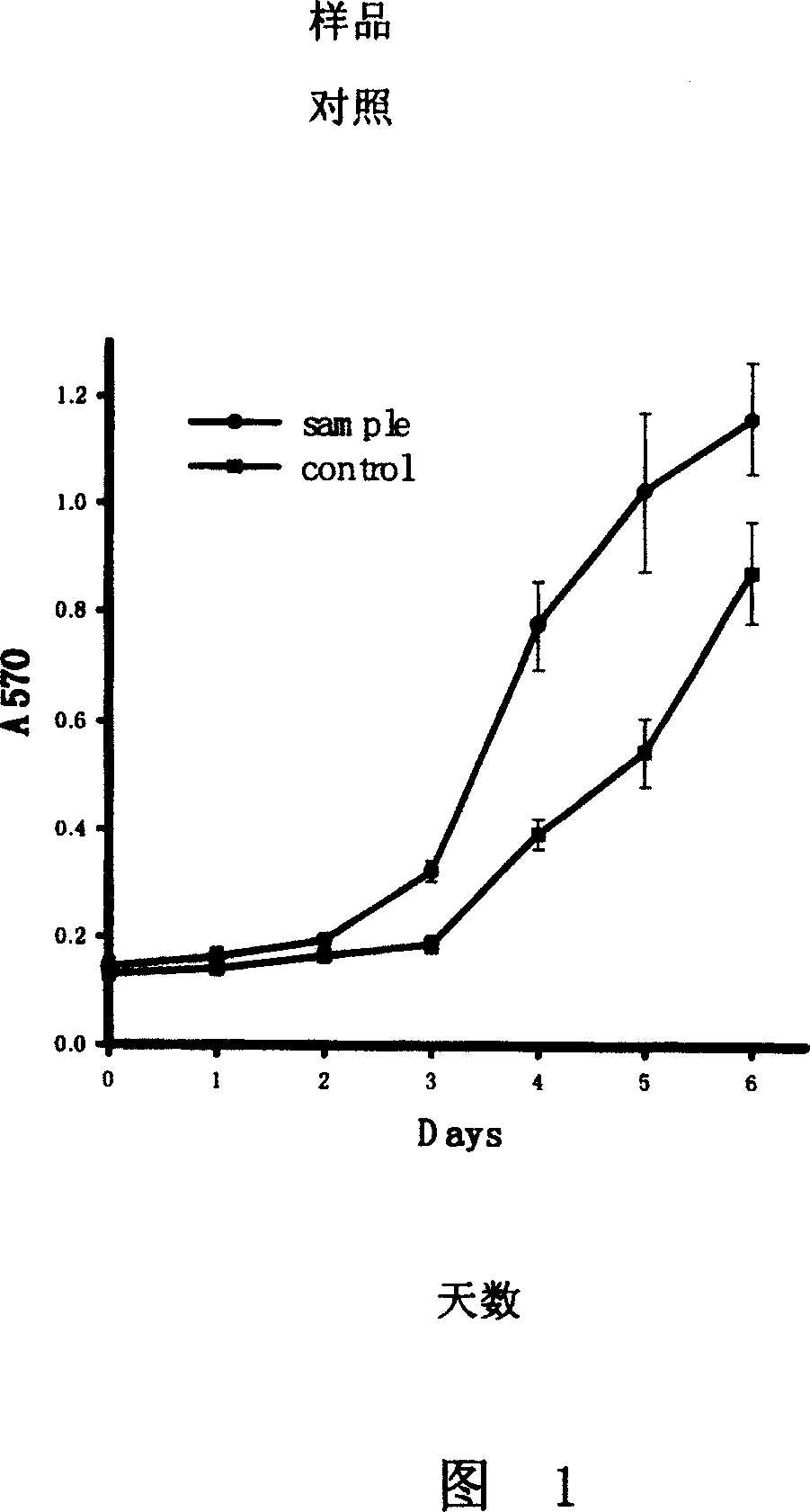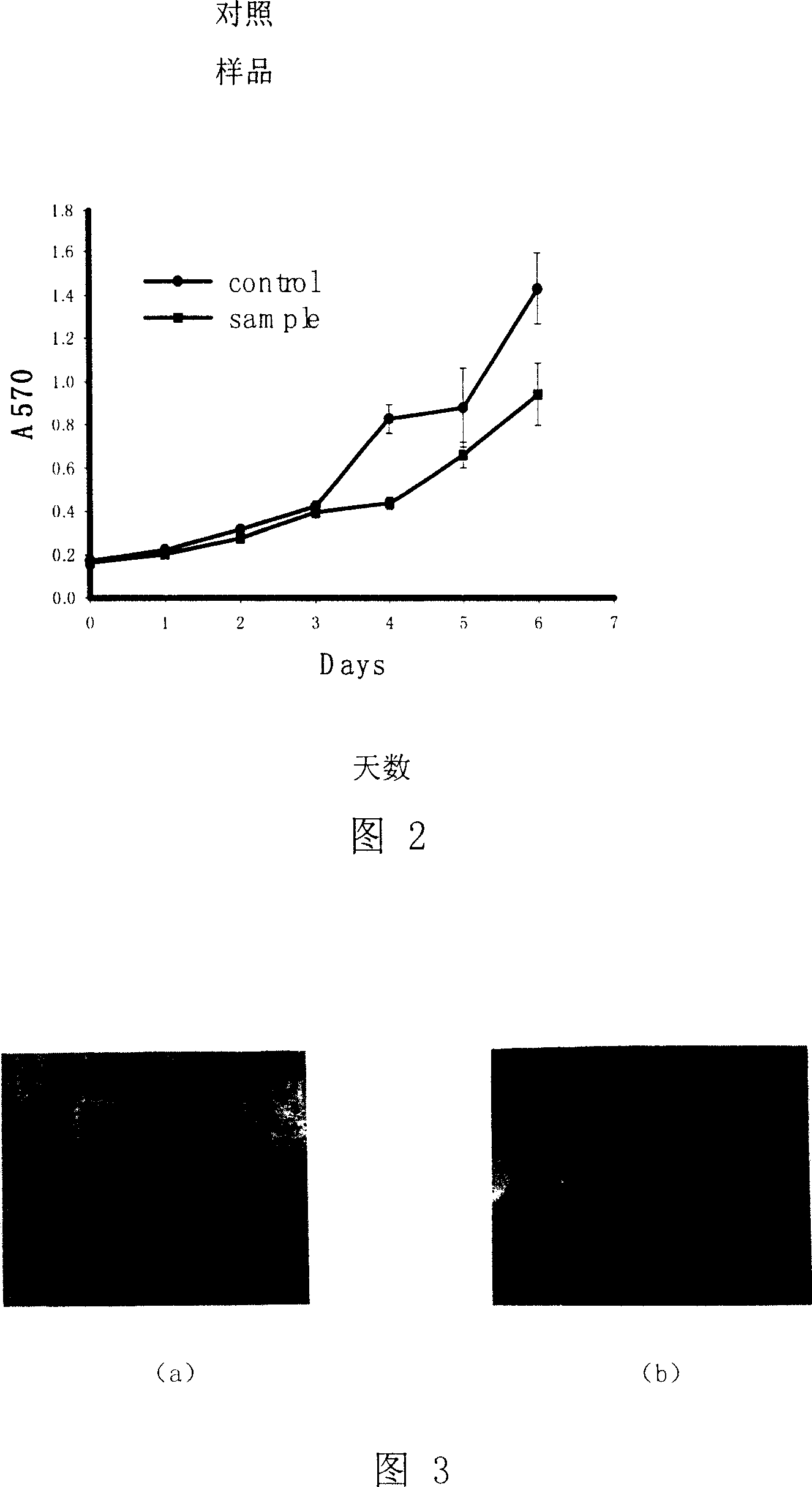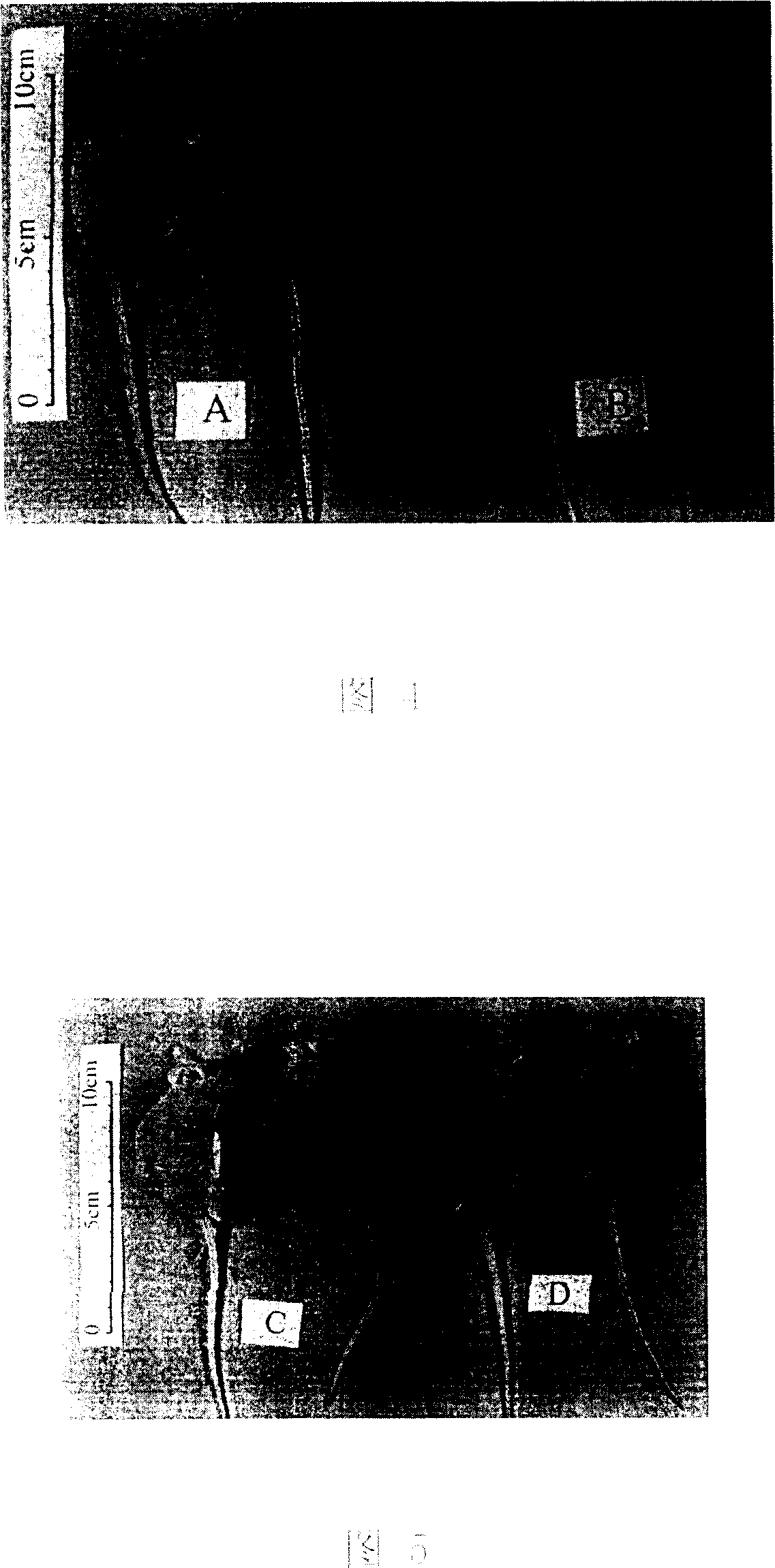Anti cancer gene medicinal composition, micromolecule interfere RNA and its filtrate method
A small molecule interference and gene drug technology, applied in the field of gene therapy, can solve the problems of undiscovered liver cancer treatment and achieve the effect of a good screening platform
- Summary
- Abstract
- Description
- Claims
- Application Information
AI Technical Summary
Problems solved by technology
Method used
Image
Examples
Embodiment 1
[0043] Example 1 Obtaining of antisense fup1 gene sequence
[0044] According to the coding gene sequence of fupl (SEQ ID NO: 1), the cDNA sequence (SEQ ID NO: 2) of the antisense fupl gene was obtained after processing with DNATool software. Using upstream and downstream primers with BamHI and EcoRI cleavage sites respectively, using the plasmid extracted from the human hepatocyte cDNA library as a template, the target gene fup1 and antisense fup1 gene were obtained by PCR amplification (according to the literature "Pan Wei et al., Acta Biochemistry and Biophysics, 2001, 33(2): 173-178"). After the PCR products of the above fup1 gene and antisense fup1 gene were treated with EcoRI and BamHI respectively, according to the difference in the enzyme cutting sites at both ends of the primers, they were ligated with double sticky ends, and inserted directionally into pcDNA3 eukaryotic cells treated with the same endonuclease in the expression vector.
Embodiment 2
[0045] Example 2 Determination of growth curves of eukaryotic cells transfected with fup1 gene and antisense fup1 gene
[0046] Transfect mouse fibroblast NIH3T3 with the pcDNA3 plasmid and empty vector integrated with the full-length fup1 and antisense fup1 cDNA by liposome method: NIH 3T3 cells were cultured in a 35mm culture dish, and when the fullness reached about 60%, According to each transfection reaction, use 2ug plasmid and 5ug liposome to operate: first mix the plasmid and liposome in 100ul DMEM basic medium, then mix the two with each other and place at room temperature for 30 minutes. Thereafter, 0.8 ml of DMEM basic medium was added to the sample and mixed evenly, and then the above mixture was added to the cells washed with DMEM basic medium to remove residual serum. After culturing at 37°C and 5% CO2 for 5 hours, add 1 ml of DMEM medium containing 20% serum to the transfected cells, and continue culturing at 37°C and 5% CO2. 24 hours after the start of trans...
Embodiment 3
[0049] Example 3 Soft agar colony formation experiment of antisense fup1 gene transfection of human liver cancer cell BEL7404
[0050] Mix 0.5ml 1.2% agar and 0.5ml 2× medium to make a complete medium containing 0.6% agar, quickly add it to a 6-well culture plate, let it stand at room temperature to solidify, and use it as the lower medium; then mix 0.5ml 0.6% agar and 0.5ml 2× medium to make a complete medium containing 0.3% agar. BEL7404 cells stably transfected with fup1 antisense cDNA identified by RT-PCR and BEL7404 control cells transfected with pcDNA3 empty vector were counted at 5×10 per well 3 Cells were seeded in soft agar medium in a 6-well culture plate and added to the lower medium. After the upper layer culture was solidified at room temperature, incubate at 37°C, 5% CO 2 cultivated under conditions. After 2 weeks of culture, the cell morphology was observed and photographed under a phase-contrast microscope. The analysis results showed that the colonies form...
PUM
 Login to View More
Login to View More Abstract
Description
Claims
Application Information
 Login to View More
Login to View More - R&D
- Intellectual Property
- Life Sciences
- Materials
- Tech Scout
- Unparalleled Data Quality
- Higher Quality Content
- 60% Fewer Hallucinations
Browse by: Latest US Patents, China's latest patents, Technical Efficacy Thesaurus, Application Domain, Technology Topic, Popular Technical Reports.
© 2025 PatSnap. All rights reserved.Legal|Privacy policy|Modern Slavery Act Transparency Statement|Sitemap|About US| Contact US: help@patsnap.com



